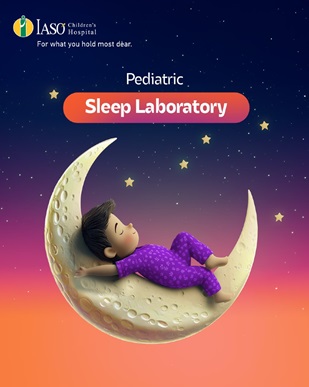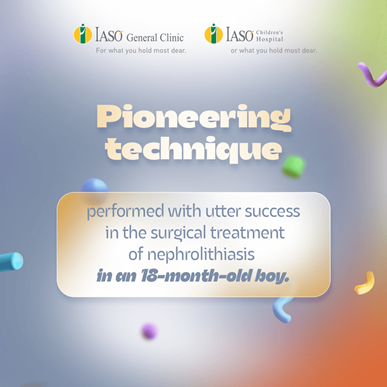
Fever
Fever is a common symptom in childhood and the most common reason for parents to seek healthcare services. Fever is often the result of viral or bacterial infection rather than a critical illness. Early treatment with pharmaceutical anti-fever therapy and with the appropriate support measures help your child feel better soon. This article contains basic information about how to care for a feverish child at home. Valid and documented information contributes to easing the parents’ anxiety and fear when their child has a fever.

What is the normal body temperature?
Normal body temperature should be between 36°C and 37°C. The temperature of the human body is affected by many factors such as age, gender, the time of day and the child’s activity. The lowest appears in the early morning hours and the highest in late afternoon.
- Normal body temperature: 36°C - 37°C
- Increased body temperature: 37°C - 38°C
- Fever: over 38°C
- High temperature in children: 40°C
What is fever?
Fever is defined as having a temperature above the normal range due to an increase in the body's temperature set point, meaning above 38°C.
There are several factors that can increase body temperature. The most common are cold, flu, deciduous teeth, ear pain and sore throat. Fever can also be a manifestation of known childhood diseases. In addition, even a slight increase in temperature in neonates and infants may be an indicator of a serious infection.
Other causes of high temperature in older children are vigorous exercise, overheated environment and excessive clothing. Especially neonates may have an increase in temperature when dressed disproportionately to external temperature, or when they have not been hydrated properly, or when a longer time period has elapsed between meals.
A feverish child often looks like a patient who:
- Is flushed or pale
- Feels hot or cold at touch
- Is restless or sluggish
- Shivers or tremors
- Sweats or is thirsty
Feverish children often feel tired, look pale, are moody and have decreased appetite. Their pulse and breaths are also elevated. They may also feel warm in their entire body or complain about being cold and tremble.
Measurement of children’s body temperature
The key to its treatment is the right temperature taking. For children younger than 4 weeks old, temperature should be taken with a digital thermometer under the armpit.
For children between 4 weeks to 5 years old, body temperature should be taken with one of the following methods:
- Digital thermometer under the armpit
- Infrared ear thermometer
Taking the body temperature orally or rectally in children aged 0-5 years old is not recommended.
Taking the temperature orally is dangerous because a small child can bite and break the thermometer, especially a glass thermometer. Also, the reading may be inaccurate because it is difficult to hold a thermometer under a child's tongue.
Taking the temperature rectally might be dangerous for injury. Pacifier thermometers or fever strips should not be used because they do not give accurate temperature results.
Administration of medication
The common fever treatment is to administer anti-fever drugs (paracetamol, mefenamic acid, tolfenamic acid, ibuprofen). The anti-fever drug dose is always determined by the pediatrician and is based on the child’s weight and not the age. The best fever reducer is when medication is combined with natural methods (administration of fluids, light clothing, etc.). Literature and international organizations mainly recommend the administration of paracetamol and ibuprofen for fever treatment. Ibuprofen has a stronger anti-fever effect and better manages childhood anxiety and moodiness. The treatment goal of anti-fever administration in feverish children is to relieve them overall and improve their general physical condition in relation to a serious illness.
After visiting the pediatrician, parents and guardians who take care of a feverish child at home should look for additional advice when:
- The child manifests convulsions, or is excessively sleepy, lethargic or does not react to external stimuli
- The child develops a rash, neck stiffness, ear pain, headache, sore throat, or any other symptom of the disease that might concern them
- The child has extreme restlessness or irritability with persistent wheezing or coughing
- The child vomits or suffers from diarrhea
- The parent assesses that the child's condition is worse than before they asked for advice
- The fever has lasted more than 5 days
- The parent is particularly restless and cannot take care of the child
Fever should be monitored carefully, especially when the child suffers from a chronic disease and receives additional treatment. Parents should seek the advice of their pediatrician in the following cases:
- The feverish child is younger than three months old
- The child has a high fever (40°C)
- The fever does not subside or lasts more than three days
- The child has febrile convulsions during which they remain unresponsive while jerking their arms and legs
- The child does not want to drink any fluids and there is risk of dehydration
- Fever of unknown origin
- The child looks weak and moody
- The child complains about pain
- You are particularly restless even if none of the above are happening









